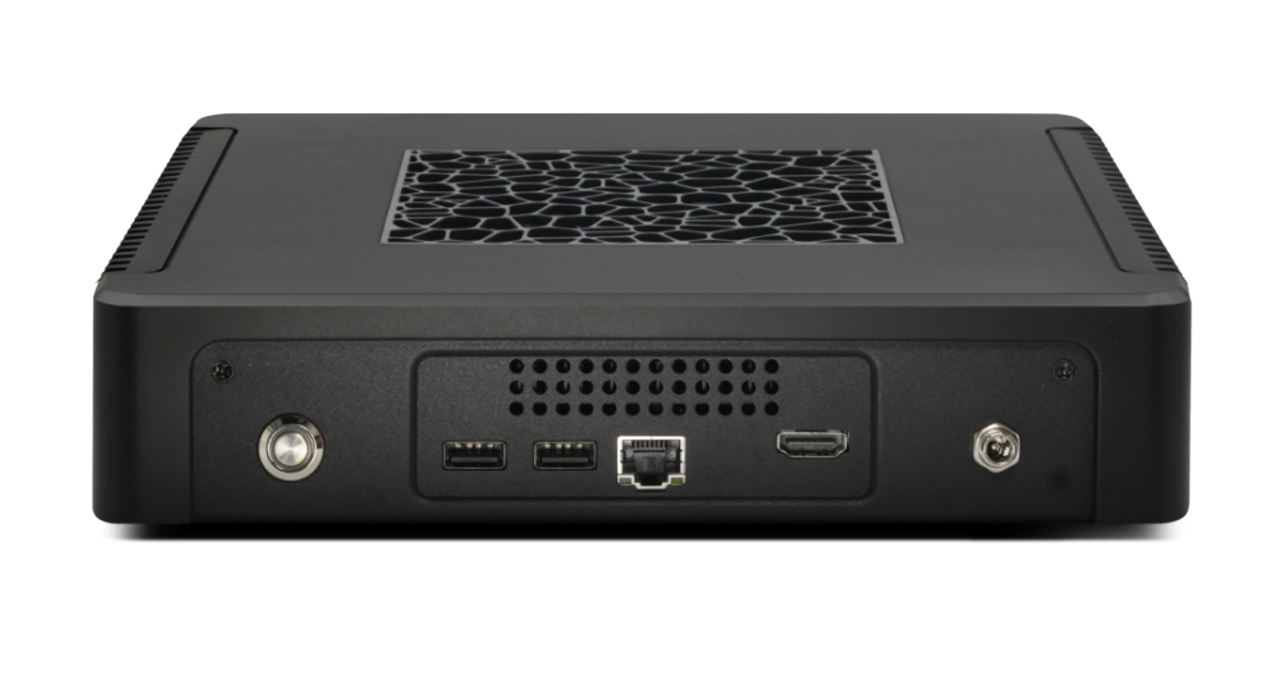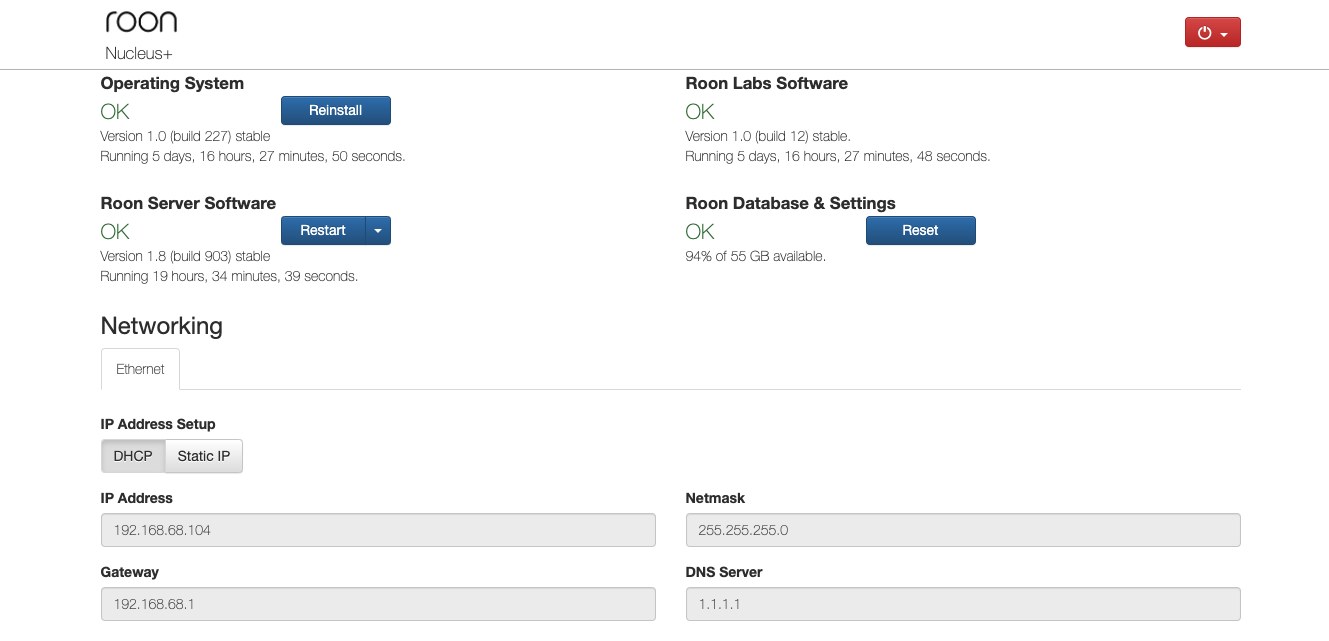First Impressions of the Roon Nucleus One
Jul 5, 2024 8:48:52 GMT -5
thompson12, ttocs, and 1 more like this
Post by Boomzilla on Jul 5, 2024 8:48:52 GMT -5
PART 1 - UNBOXING
The Roon Nucleus One came double boxed with good cardboard packing inserts. The box contained the Nucleus itself, a power supply, an Ethernet cable and misc. parts such as hard drive mounting screws. What it notably lacked was an owners' manual and the mounting rails for an internal hard drive.

PART 2 - SETUP
As it turns out, no internal hard drive is needed at all unless you want to store your music library on the internal drive. Since I can buy a Synology RAID and two 3.5" enterprise rotating hard drives for (significantly) less than an 8TB SSD, I opted to use the network storage option with full data redundancy and the option to hot-swap drives if either fails.
The Roon offers two USB-A ports, an Ethernet port, a power socket, a HDMI port, and a lighted power switch. Since I chose to network my Nucleus one, rather than putting it on the audio rack, the only two ports I used were the power socket and the Ethernet port.
I had to direct the Nucleus One to my networked Synology RAID (the music library drive), and then select my Yamaha RX-V6A as the destination device. Note that the Roon Nucleus plays directly to the Yamaha's Ethernet port with no converters needed. In this configuration, the Yamaha claims that it's receiving an ApplePlay signal.
Administration of the Roon Nucleus One is done via web interface:

If you have fancy computer security such as VPN or software firewalls, you may need to fiddle with security and ports to access the Roon Nucleus and/or your NAS.
PART 3 - IN USE
I'm just starting to use the Nucleus One, so consider ALL remarks here as preliminary. As I understand it, you are allowed to have as many Roon installations as you might want, but only licensed installs can actually play back. It's therefore my intention to:
My understanding is that once changes are made to the library, the Roon Nucleus will automatically incorporate the changes in the playback user interface.
PART 4 - SUMMARY
The Roon Nucleus One seems to be totally quiet (no fan noise at all), reasonably well constructed, good sounding, and simple to operate. I'll update this mini review as I gain experience with the Roon Nucleus One.
Boomzilla (aka Glenn Young)
The Roon Nucleus One came double boxed with good cardboard packing inserts. The box contained the Nucleus itself, a power supply, an Ethernet cable and misc. parts such as hard drive mounting screws. What it notably lacked was an owners' manual and the mounting rails for an internal hard drive.

PART 2 - SETUP
As it turns out, no internal hard drive is needed at all unless you want to store your music library on the internal drive. Since I can buy a Synology RAID and two 3.5" enterprise rotating hard drives for (significantly) less than an 8TB SSD, I opted to use the network storage option with full data redundancy and the option to hot-swap drives if either fails.
The Roon offers two USB-A ports, an Ethernet port, a power socket, a HDMI port, and a lighted power switch. Since I chose to network my Nucleus one, rather than putting it on the audio rack, the only two ports I used were the power socket and the Ethernet port.
I had to direct the Nucleus One to my networked Synology RAID (the music library drive), and then select my Yamaha RX-V6A as the destination device. Note that the Roon Nucleus plays directly to the Yamaha's Ethernet port with no converters needed. In this configuration, the Yamaha claims that it's receiving an ApplePlay signal.
Administration of the Roon Nucleus One is done via web interface:
If you have fancy computer security such as VPN or software firewalls, you may need to fiddle with security and ports to access the Roon Nucleus and/or your NAS.
PART 3 - IN USE
I'm just starting to use the Nucleus One, so consider ALL remarks here as preliminary. As I understand it, you are allowed to have as many Roon installations as you might want, but only licensed installs can actually play back. It's therefore my intention to:
- Use the Roon web interface only for hardware changes.
- Use Roon Remote on an iPad to control playback.
- Use dB Poweramp on the Mac mini to rip new music to the NAS.
- Use the unlicensed Roon core install on the Mac mini to modify metadata.
My understanding is that once changes are made to the library, the Roon Nucleus will automatically incorporate the changes in the playback user interface.
PART 4 - SUMMARY
The Roon Nucleus One seems to be totally quiet (no fan noise at all), reasonably well constructed, good sounding, and simple to operate. I'll update this mini review as I gain experience with the Roon Nucleus One.
Boomzilla (aka Glenn Young)

